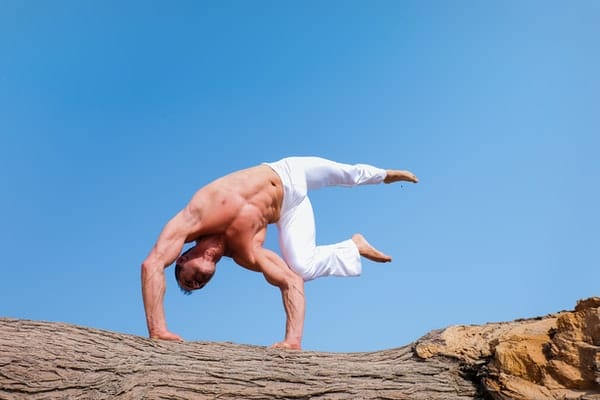Yoga for People Who Are Inflexible
by MindfulXyoga
"Inflexible" yoga students can prosper if they find the proper instructor or class, are ready to make adaptations, and have the correct attitude about their practice.
The selection of the appropriate yoga instructor or class will be influenced by a variety of factors, including the student's motivations for commencing a yoga practice.
No matter how talented the instructor is, the "inflexible" student who begins a yoga practice to lose weight may become upset with the speed of a beginner/gentle class, regardless of the teacher's abilities. A different goal in mind, such as stress relief, may lead to a different learner experiencing great satisfaction from the slower pace of a novice or moderate session.
Both students must conduct an honest and realistic assessment of their own requirements and abilities, after which they must seek out the most appropriate instructor and course.
Yoga Instructors for People with Limited Flexibility
As a result, certain instructors can be more helpful to the stiff, brand new yoga student because they provide a comfortable environment for all students, regardless of experience level. Anatomy, posture adjustments, and yoga props are all familiar territory for such an instructor, who guides students through their practice with an emphasis on non-competitiveness and self-care.
This teacher assists pupils in cultivating the crucial attitude of self-acceptance as well as steady, progressive "practice," which are both vital.
A viewpoint allows all students to pay attention to their body and work from where they are without pushing themselves to the point of injury or stressing about their failure to appear exactly like the teacher or other students, among other things.
The adjustments shown below can be done in a yoga session or at home with little equipment. Many fitness centers and yoga studios provide yoga blocks and blankets, which may be used in these types of exercises as well as in other types of exercises.
Exercises for Tight Hamstrings: Yoga Modifications
In sitting forward bends, use a rolled yoga mat, folded blanket, or yoga bolster to support your body. It alters the angle of the hips, relieves strain on the hamstrings, and allows the lower back to extend, all of which can be important in preventing damage to this area in certain situations.
When performing standing bends, use a yoga block. A common complaint among students who have tight hamstrings is that their arms are too short to reach the floor. A block fills in the gap between the hand and the floor, providing support and assisting the learner in deepening the stretch without succumbing to the urge to grope for the floor, a habit that can lead to injury and, in some cases, can prevent the student from stretching the tight muscle altogether.

Yoga Modifications for Tight Shoulders
Bring a yoga strap or a gym towel to class to keep your wrists from slipping. Students who are unable to reach hand to hand behind their backs, for example, might benefit from the use of a belt or towel to achieve an otherwise unattainable stretch.
Yoga Modifications for Tight Hips
Using seated cross-leg poses while sitting on a square or folded blanket will help to raise the hips. Breathing exercises and "centering" are common parts of yoga courses, and they are frequently performed while sitting in a cross-legged position, which may be extremely painful and frustrating for students with tight hips. A block or folded blanket placed under the hips and lower back helps to alleviate strain on the joints and allows the spine to rise more rapidly.
Yoga Anatomy Lessons in Other Styles
A newbie yoga student may have just a foggy idea of where the hamstrings are located before attending a yoga session for the first time. During a yoga session, however, this will fast become obsolete. A competent instructor may assist the student avoid developing an antagonistic connection with these "new" muscles and instead encourage them to develop a feeling of wonder about these new muscles.
However, it is ultimately up to the learner to cultivate this mentality, and this part of yoga practice is not always clear. The benefits of this "attitudinal" work, on the other hand, go well beyond the development of supple muscles and into a more deep and liberating experience of life away from the mat.
For more visit MindfulXyoga
